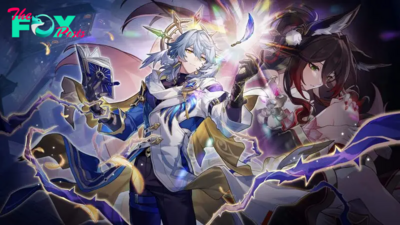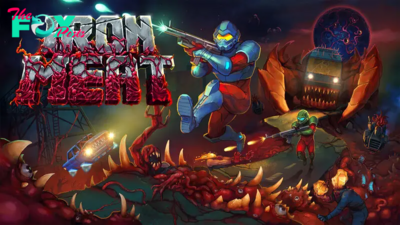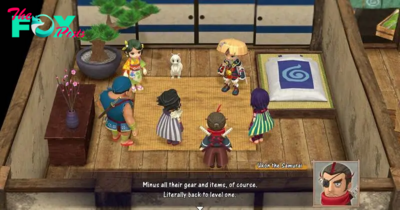Game
X-Males ’97 x-pands past the Nineteen Nineties on this week’s ‘Keep in mind It’ episode
Within the first half of its first season, X-Males ’97 has performed it just a little secure. That’s to not say issues haven’t been slightly enjoyable, because the present has put its personal spin on the Inferno and Lifedeath storylines, on Magneto inheriting management of the X-Males, and on the delivery of Nathan Summers — all pillars of X-Males continuity or beloved greatest-hit tales of the Eighties and Nineteen Nineties.
However in its fifth episode, X-Males ’97 does one thing X-Males: The Animated Sequence by no means might have. What’s extra, the present did it emphatically, boldly, and downright thrillingly: a half-hour workshop on what you get when the X-Males manufacturers of cleaning soap opera, sci-fi motion, and philosophy of the Different come collectively excellent.
You get among the best spectacles superhero comics can supply.
[Ed. note: This piece contains spoilers for “Remember It,” the fifth episode of X-Men ’97.]
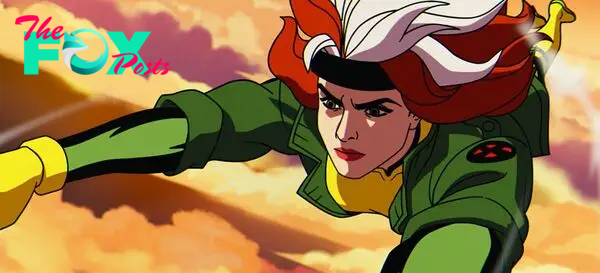
Picture: Marvel Animation
This week on X-Males, the X-Males went to Genosha they usually watched it fall.
What’s the cope with Genosha?
Genosha is an island nation for mutants, first created by Chris Claremont and Rick Leonardi in 1988. If you happen to’ve learn any X-Males comics since 2019, Genosha in all probability sounds rather a lot like Krakoa, the island nation for mutants launched in 2019’s Home of X/Powers of X sequence. And author Beau DeMayo and director Emi Yonemura positively play with that resonance in “Keep in mind It.”
Their model of Genosha is dominated by a “council” that features Magneto, Sebastian Shaw, Emma Frost, and Nightcrawler, as a non secular advisor. Moira MacTaggert is there too, with Exodus in cameo, because the X-Males attend a “gala” stuffed with mutant style and music — all Krakoan hallmarks.
However the episode’s silent cameos are loaded with post-Nineteen Nineties mutant college students like Glob Herman, Pixie, and Nature Woman, they usually’re an early warning signal that “Keep in mind It” is merely weaving Krakoan packaging across the island of Genosha. As a result of whereas the story of Krakoa (even because it involves an finish) is of a mutant paradise, the story of Genosha is of a mutant genocide.
Claremont and Leonardi’s Genosha started its editorial existence as a totalitarian state that oppressed all mutants inside its borders, supposed as a direct metaphor for South African apartheid. However by the late Nineteen Nineties, the unique Genoshan authorities had been overthrown and changed with a Magneto-led mutant state. That’s, till 2001, when, within the second subject of Grant Morrison’s New X-Males, “E Is for Extinction (Half 2),” an anti-mutant supervillain massacred all 16 million mutants on the island in a day utilizing a kaiju-sized, bug-shaped Sentinel robotic and fleet. Which is precisely what occurs in X-Males ’97’s “Keep in mind It.”
Who destroyed Genosha?
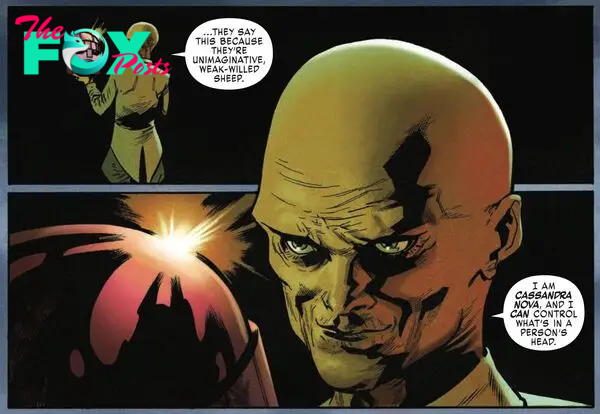
Picture: Tom Taylor, Mahmud Asrar/Marvel Comics
X-Males ’97 leaves this query conspicuously dangling, no less than on this episode. When Cable arrives from the longer term with a dire however imprecise warning — as he does right here to Madelyne Pryor — it normally signifies that the villain Apocalypse is responsible. However kaiju-sized Sentinels aren’t actually Apocalypse’s fashion.
DeMayo and Yonemura have been seemingly very conscious that fingers would additionally level on the villain who destroyed Genosha within the comics: Cassandra Nova, Professor Xavier’s evil double. Evidently, with the Professor lifeless, it’s a good time for his darkish mirror to point out up and provides everybody a sophisticated set of emotions about it. And with Jean and Madelyne seeming to obtain some sort of psychic assault throughout Genosha’s demise, the proof is mounting.
However the actually thrilling factor about “Keep in mind It” is that we’re even speaking about X-Males ’97, a present about replicating nostalgia for the X-Males of the Nineteen Nineties, and Cassandra Nova, the quintessential post-’90s X-Males supervillain, in the identical breath.
If Cassandra Nova is on the desk, something might be.
X-Males ’97 is X-panding past its mandate

Picture: Frank Quitely/Marvel Comics
To X-Males students, the Nineteen Nineties are infamously well-known for being a transitional time. From 1975 to 1990, the characters have been primarily the Pet undertaking of Chris Claremont, the primary author to actually make the title successful. Together with his departure, the X-Males titles have been produced by a extra conventional rotating succession of author/artist groups, producing numerous excessive highs and low lows as these creators put their very own spin on the components Claremont had established.
While you discuss concerning the “’90s period of X-Males,” with which X-Males: The Animated Sequence is so intently related, there’s a particular level at which the interval is taken into account to have been over, full cease: not New Yr’s Eve 1999, however for the time being that Grant Morrison and Frank Quitely revealed their first subject of New X-Males in 2001.
Morrison was the primary post-Claremont author who really iterated on the idea of the X-Males, slightly than merely replicating. The X-Males went absolutely postmodern, with Morrison as excited about making a superhero comedian as in enjoying with the concept of a newly rising tradition outlined by being oppressed and having bizarre powers. Concepts of mutant style, artwork, and social commentary — of mutant teenagers that discovered it edgy to decorate like anti-mutant racists and to piss off their lecturers by sporting “Magneto was proper” T-shirts — outline the Morrison period.
In Claremont’s X-Males, mutant characters whose powers aren’t a lot harmful as they’re disfiguring or disquieting have been relegated to the little-seen sewer-dwelling group of the Morlocks. In Morrison’s X-Males, they have been a big a part of the Xavier faculty scholar physique — “Keep in mind It” prominently options Morrison and Quitely’s Glob Herman, whose mutation is that he’s a skeleton and organs enclosed in a regenerating mass of flaMMAble, pink, translucent paraffin wax. In addition they launched the idea of “secondary mutation,” to remodel current mutant characters, giving Beast a catlike face and digitigrade legs.
Morrison’s swerve was so reactionary to ’90s X-Males — Beast, a monster; Cyclops marrying Emma Frost; Jean welcoming the ability of the Phoenix with open arms; Genosha massacred — that it’s no shock that the parents behind X-Males ’97 can be tempted to use its occasions to this earlier, extra harmless model of the characters. It wouldn’t even be the primary time.
There’s been greater than 25 years of recent X-Males tales since X-Males: The Animated Sequence went off the air. It’d be unreasonable to anticipate the parents behind X-Males ’97 to not look to these many years for inspiration. “Keep in mind It,” far and away the very best episode of the present up to now, is a really compelling motive to be enthusiastic about that.
Source_link
-
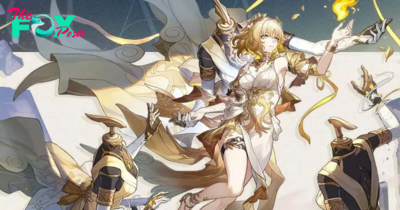
 Game1d ago
Game1d agoHoYoverse teases Honkai Star Rail 3.0 characters, and oh by the way in which, Remembrance is a brand new playable path
-

 Game1d ago
Game1d agoThe Highest-Priced Playing cards In Pokémon TCG’s Surging Sparks
-

 Game1d ago
Game1d agoElden Ring: Shadow of the Erdtree Garners Controversy Amidst GotY Nomination
-

 Game2d ago
Game2d agoEvery day Themed Crossword Hints November 20 2024
-

 Game2d ago
Game2d agoPS Portal Will Enable Cloud Streaming in New Beta Replace
-

 Game2d ago
Game2d agoFinest Weapons Tier Record in Hollowed Roblox – Weapons Ranked With Explanations
-

 Game2d ago
Game2d agoPokémon TCG Pocket has already surpassed $120m since launch
-
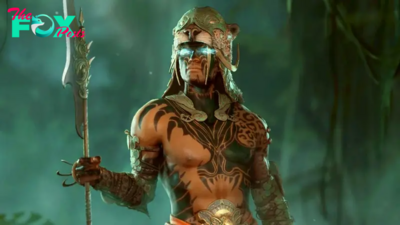
 Game3d ago
Game3d agoFuture Diablo 4 seasons will provide extra content material to Vessel of Hatred house owners
